The Redmi Note 12 Pro+ presented in China last October debuted in India in January and launched in Europe this week. We’ve been using the Redmi Note 12 Pro+ for a few weeks now and our detailed review is just around the corner, but we thought we’d share some of our findings about the phone ahead of time.
Unpacking
Let’s check the Redmi Note 12 Pro+ retail box first. In India, the smartphone comes in a black box, which includes a protective case, a SIM card eject tool, a USB-C cable, a 120W charger and the usual documentation.
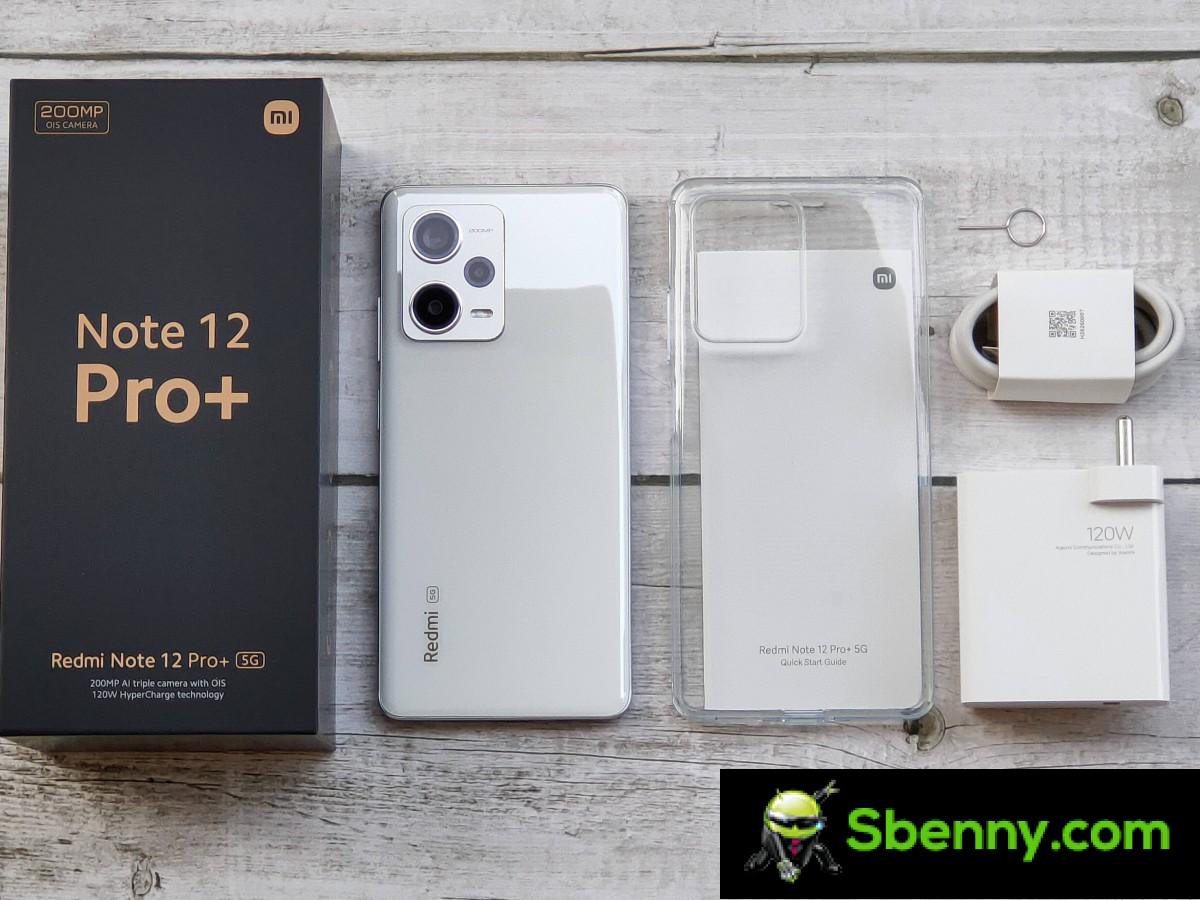
In comparison, in Europe the Redmi Note 12 Pro+ comes in a white retail box, which also bears an image of the phone. However, it is not representative of the color model you find inside the package.
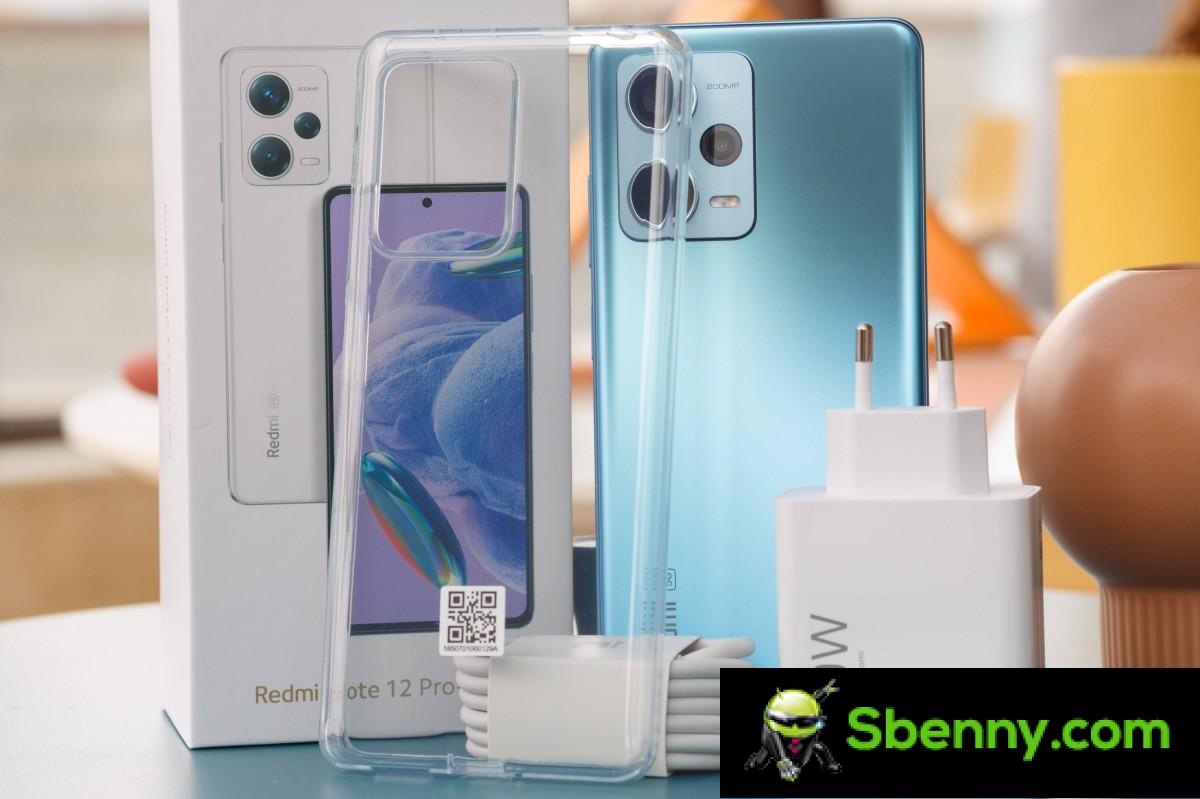
Another difference between the phone packages in India and Europe is the power adapter. Both come with a 120W charger, but look different, with the one that comes with the box in India a bit heavier.
Regardless, we appreciate that Xiaomi has bundled a 120W adapter with the package. The brand told us they didn’t remove the charger from the box as it would result in an incomplete user experience. Plus, it’s the only way you can take advantage of its ultra-fast charging out of the box since chances are you don’t have such a powerful brick at hand.
Project
The Redmi Note 12 Pro+ packs a 6.67-inch FullHD+ “Pro AMOLED” display, protected by Gorilla Glass 5. It has a refresh rate of 120Hz and a peak brightness of 900 nits.
The panel also has a hole in the center for the 16MP selfie camera, but there’s no fingerprint scanner underneath since it’s built into the power button.
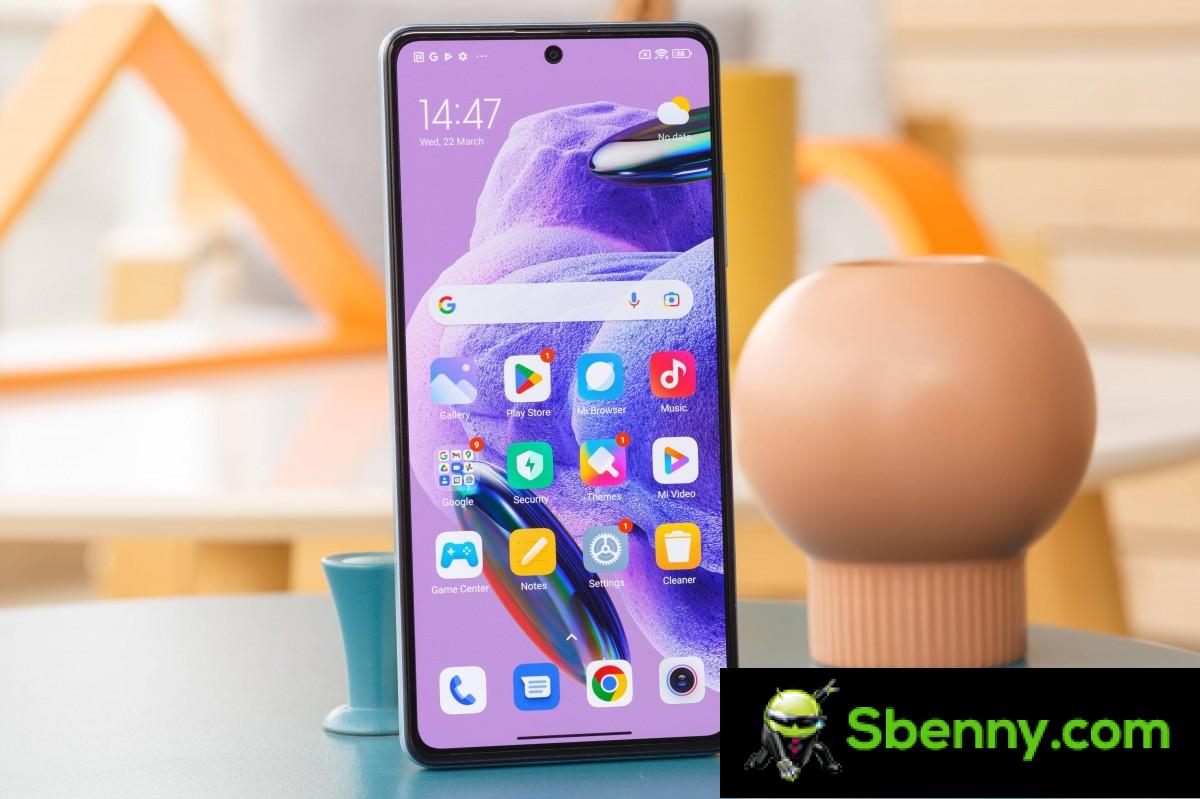
On the flip side, we have a glass back panel with a rectangular camera island that houses three cameras and an LED flash. The glass cover doesn’t look cheap, but it readily attracts fingerprint smudges, so regular cleaning is required if you’re not using a protective case and want to keep its pristine look.
It’s also worth mentioning that the protruding camera island makes the phone wobble on flat surfaces, and the bundled case doesn’t really fix that.
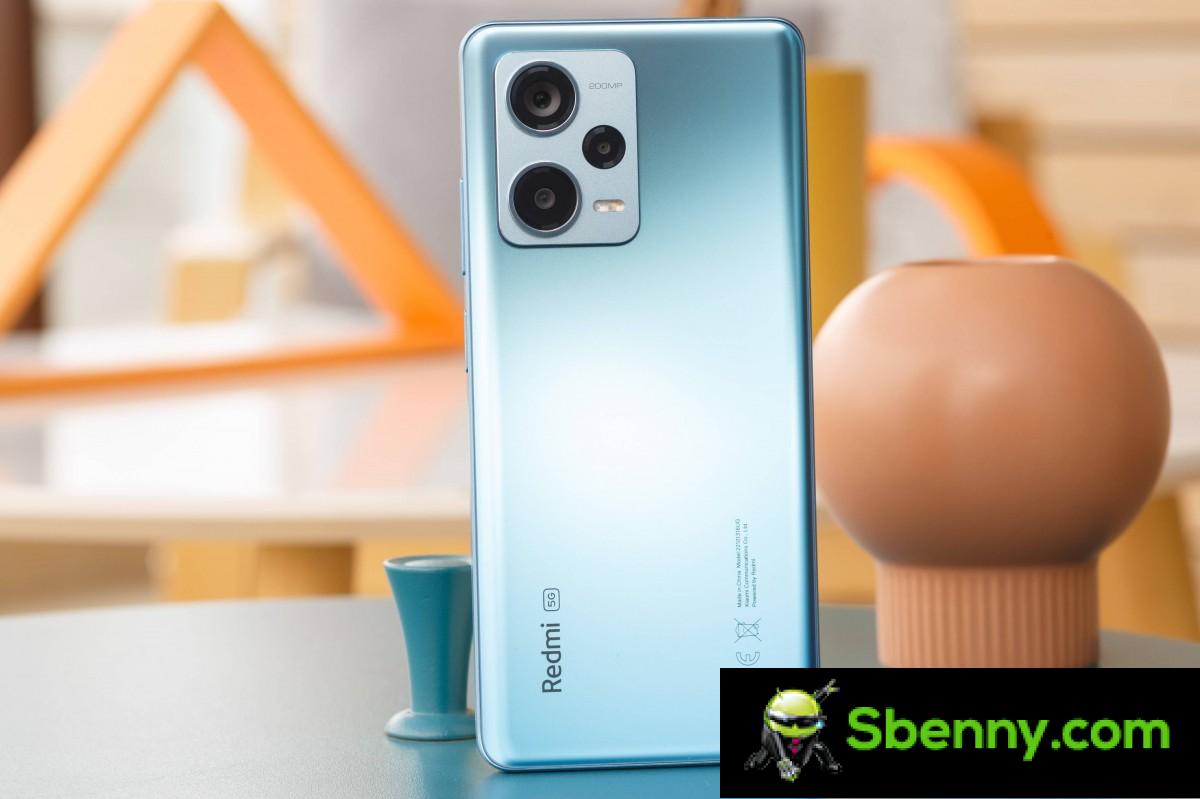
The Redmi Note 12 Pro+ has flat bezels, but luckily its back panel has subtle curves around the edges, making it easier to hold than phones with flat edges. However, the Redmi Note 12 Pro+ is not a compact phone and people with small hands may find it difficult to use it one-handed.
The smartphone has a USB-C port at the bottom, flanked by a speaker, a microphone and a SIM card slot. Up top, it has a 3.5mm headphone jack, joined by another speaker, a secondary microphone, and an IR blaster.
The frame on the left side of the Redmi Note 12 Pro+ lacks any buttons or slots, but on the right we have the volume rocker and power button. The latter has a built-in fingerprint scanner, which we found fast and accurate during our usage. However, we would have liked to see it arrive with an in-display solution.



Ports and controls
When asked about the rationale behind choosing a side-mounted solution instead of an under-display one, Xiaomi said it’s because the former is faster and performs better in the long run than the in-display type. Well, it doesn’t make much sense to us since the Chinese brand has already launched smartphones with a UD fingerprint reader, even in the mid-range segment.
That said, on the bright side, the side-mounted fingerprint scanner doesn’t just unlock the Redmi Note 12 Pro+. It supports double-tap gestures to let you perform various actions, including taking a screenshot, launching the default camera app, and opening control center.
Screen
Redmi Note 12 Pro+’s 6.67″ Pro AMOLED display has a peak brightness of 900 nits, a screen refresh rate of 120Hz, and a touch sampling rate of up to 240Hz. It’s a 10-bit display , featuring HDR10+ certification and Widevine L1 support, allowing users to stream 1080p video on supported OTT apps.
It also supports HDR10 and HLG codecs, and for an even better media experience, get Dolby Vision and Dolby Atmos.
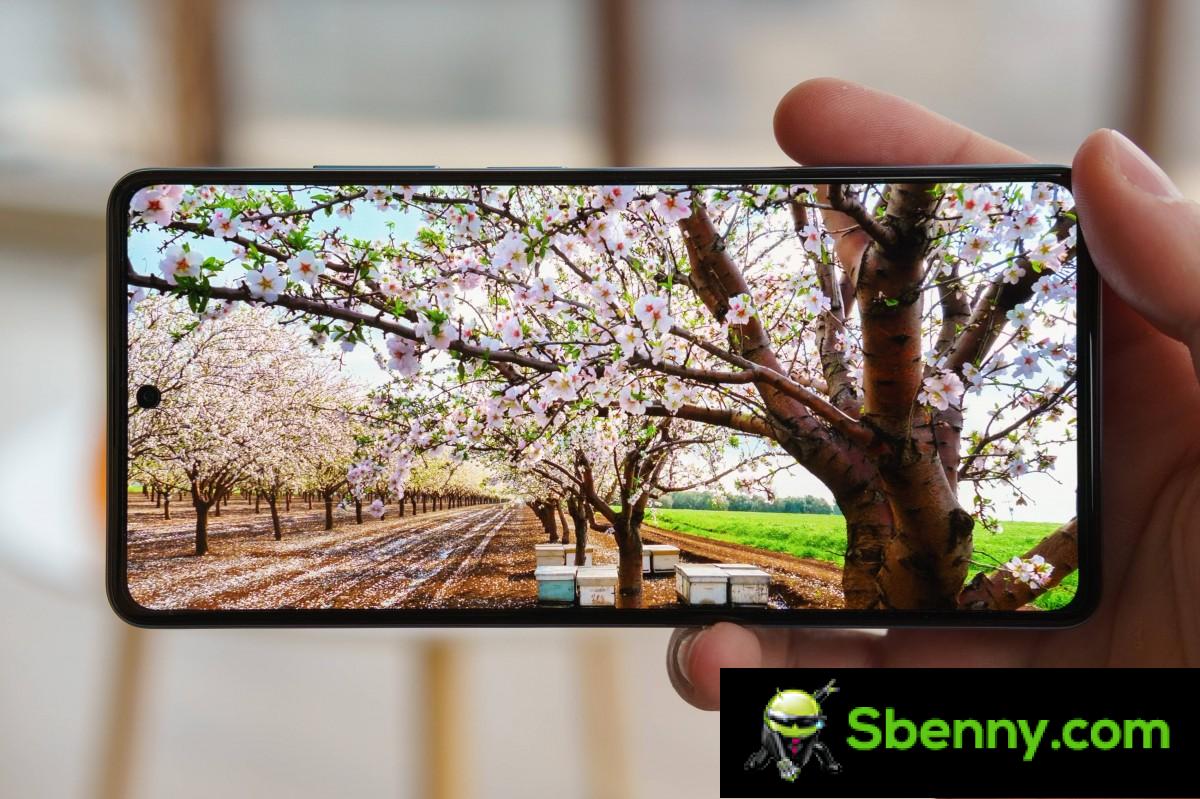
The Redmi Note 12 Pro+’s screen has good tactile feedback and the display was bright enough to read textual content in direct sunlight at maximum brightness.
It also comes with the Always-On Display feature, but that’s misleading as it doesn’t keep the screen always on after the phone is locked, as the name suggests. Information only appears on the screen for about 10 seconds after the phone is locked or the display is tapped, which is not something we see with always-on displays on other branded devices. Xiaomi should have done better with its implementation.
Redmi Note 12 Pro+ has 60Hz and 120Hz refresh rate options in the custom refresh rate menu, and supports four refresh rates in total: 30Hz, 60Hz, 90Hz and 120Hz.
By default, the refresh rate is boosted up to 120Hz for most system menus and apps when you interact with the screen, except YouTube, which stays at 60Hz anyway, while Google Photos stays at 120Hz even when they’re playing 30fps video. For Facebook and Instagram, the display refreshes to 120Hz when you interact with the screen and drops to 60Hz when you look at an image or play a video.
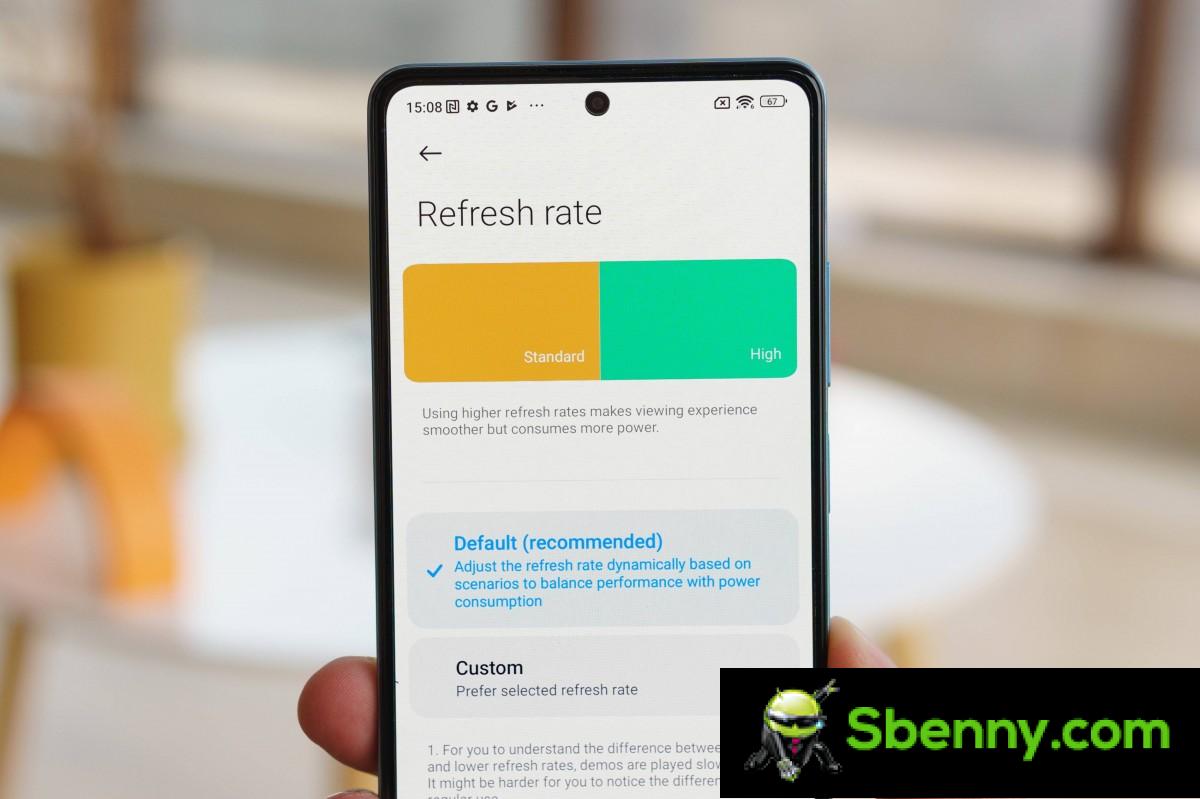
The refresh rate should stay at 60Hz in the 60Hz mode throughout, whether you’re interacting with the screen or just looking at it, while the 120Hz mode is basically just the default mode.
Speaking of games, we tried Call of Duty Mobile, Dead Trigger 2, Real Racing 3 and Sky Force Reloaded on Redmi Note 12 Pro+, and we were only able to play Dead Trigger 2 and Sky Force Reloaded at 120 FPS by default and 120Hz mode as the other two remained limited to 60 FPS no matter which mode was selected.
It’s also worth mentioning that at no point did we see the 30Hz screen refresh, which it should have when we played some videos at 30FPS and were watching static content on the screen, which is strange given that Xiaomi advertises 30Hz support for the panel. Some optimizations to the HRR implementation would be appreciated.
Software and performance
The Redmi Note 12 Pro+ is powered by the Dimension 1080 SoC and comes with up to 12GB LPDDR4X RAM and 256GB UFS 2.2 storage. What we got is the top-end model, and whichever configuration you go with, the phone boots MIUI 13 based on Android 12 out of the box. Ours came with MIUI 13.0.2 Global Stable ROM with November 2022 Android security patch and is currently running MIUI 13.0.6 with February 2023 security patch. The smartphone also comes pre-installed with third party apps, but most of them can be uninstalled if desired.
Xiaomi promises four years of quarterly security patches and two years of software updates. If the latter makes you think that your Note 12 Pro+ will get updates up to Android 15, you are wrong, as it will only get Android 13 and Android 14, as it is an older version at this point. And since the developer previews of Android 14 are already available, the Chinese phone maker should have already released stable Android 13 for the Redmi Note 12 Pro+.
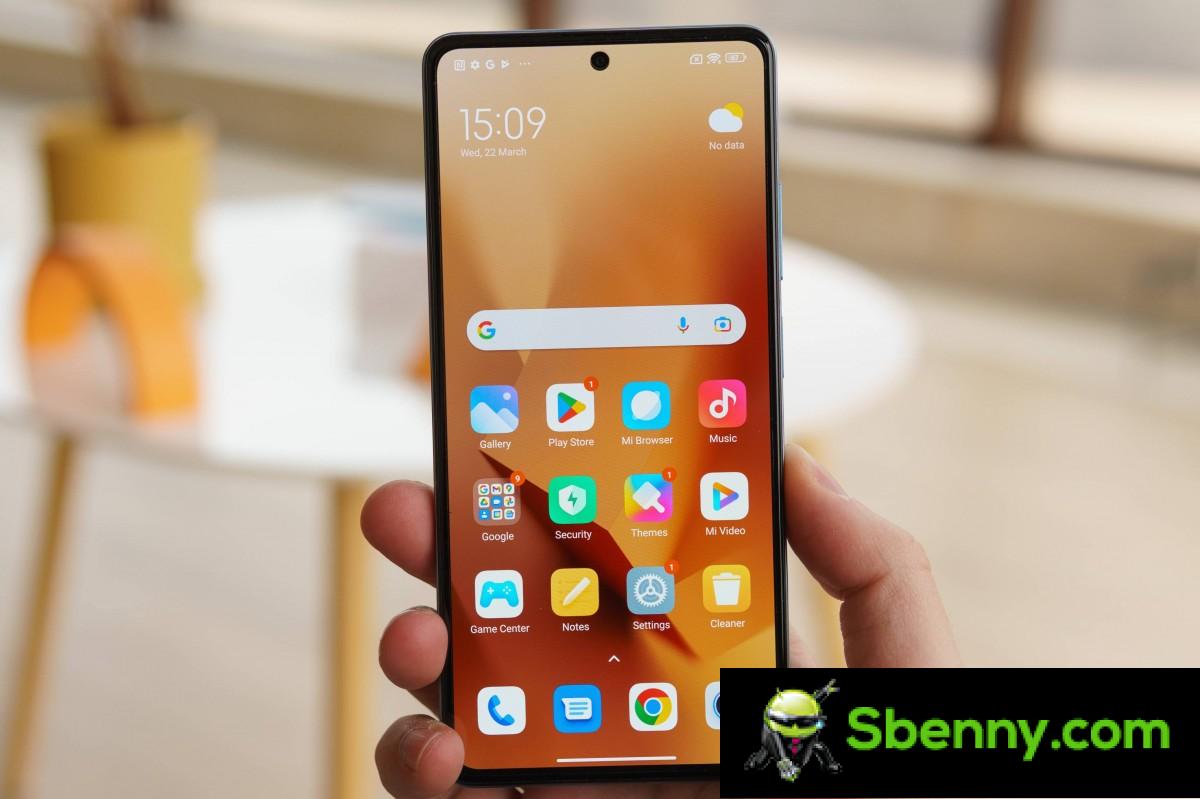
The software experience you get on Redmi Note 12 Pro+ is similar to what you get on other Redmi smartphones running Android 12 and MIUI 13. However, there were some bugs that hampered the user experience, one of which was the inability of the phone to stay connected to the 5G network in India. It kept falling back to 4G and only stuck on 5G again after a reboot. Fortunately, this problem has been fixed with the MIUI 13.0.6 update.
The overall performance of the Redmi Note 12 Pro+ was smooth and snappy. However, we still have issues with the LinkedIn and Disney+ Hotstar apps. The phone stutters most of the time when using the former, and with the latter, it’s the phone’s brightness slider that slows down when adjusting the brightness in full screen mode. We did not experience this problem with YouTube and Amazon Prime Video.
The Redmi Note 12 Pro+ handled the games we mentioned above well and remained quite cool even after an hour of intense gaming. However, it warmed up quickly on the 5G network when streaming video compared to the 4G network.
Camera and battery
The Redmi Note 12 Pro+ features four cameras: a 16MP selfie camera at the front, with a 200MP main camera (ISOCELL HPX) at the rear, joined by 8MP ultrawide and 2MP macro units. The selfie camera inside the center hole has an f/2.5 aperture and can record videos in up to 1080p resolution at 60FPS.
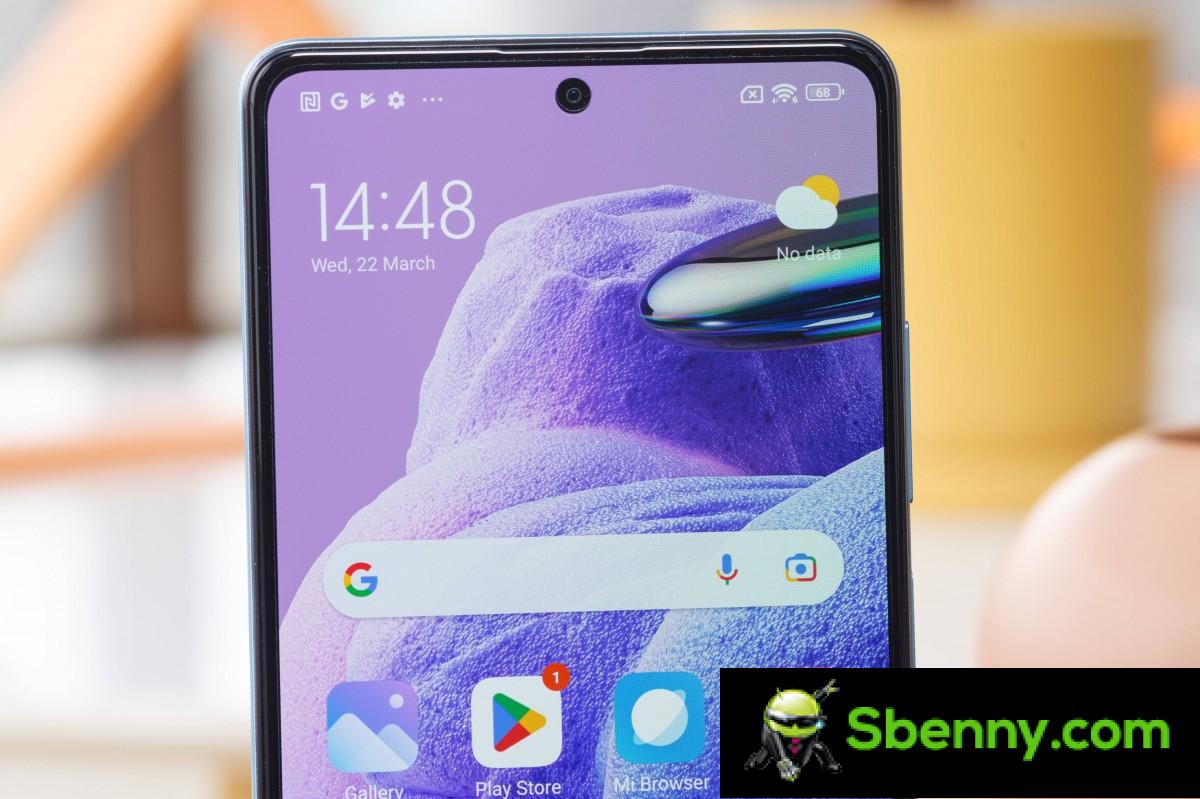
The 200 MP camera, on the other hand, has an f/1.7 aperture and OIS for photos and videos. It can shoot 1080p video at up to 60 FPS and 4K at 30 FPS. It can also capture 10-bit RAW images. However, the Redmi Note 12 Pro+ doesn’t come with the Clone feature that we’ve seen on other Redmi smartphones, including the Redmi K50i, and there’s currently no indication it will be added via a software update as Xiaomi has told us it “is mainly due to the hardware capabilities of the processor.”
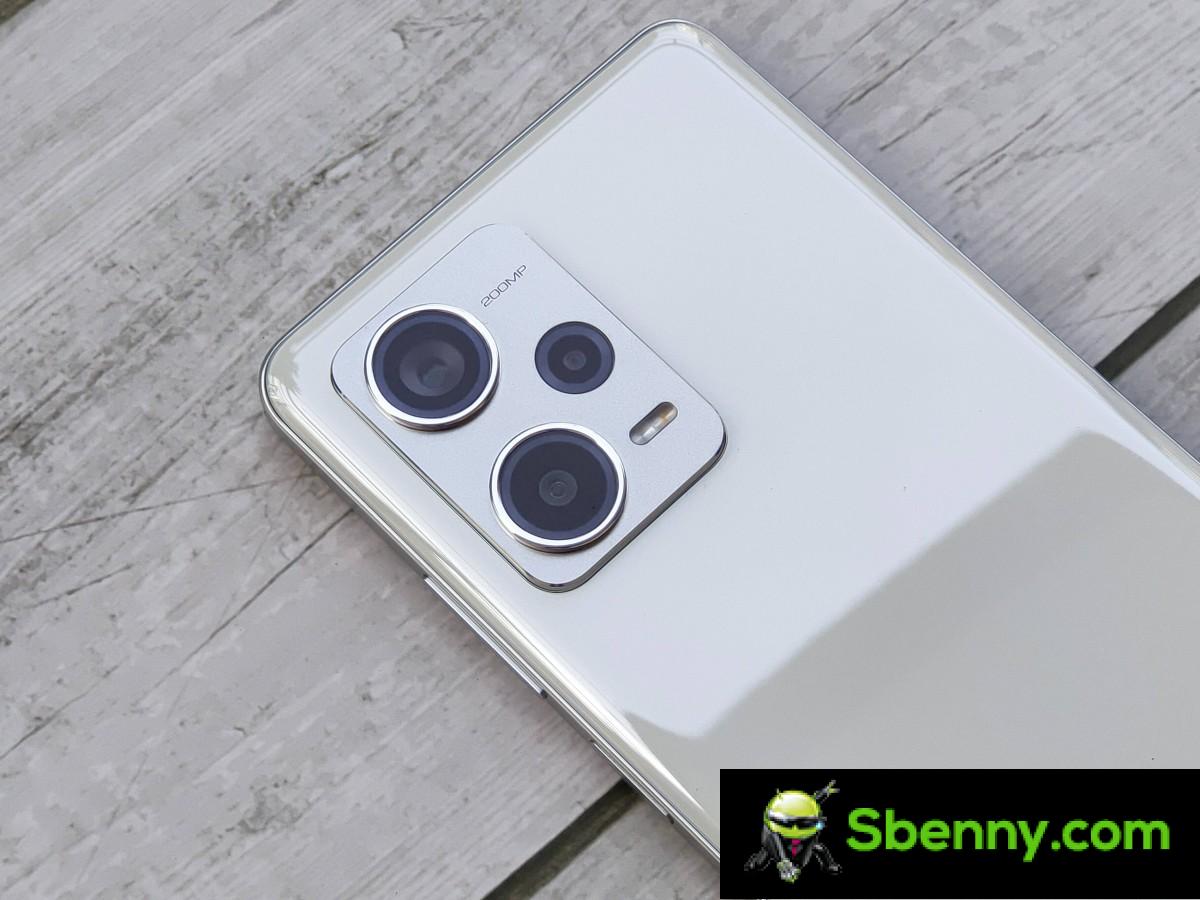
Redmi Note 12 Pro+’s 8MP ultrawide camera has a 120° field of view and an f/2.2 aperture, while the 2MP macro camera has an f/2.4 aperture. We took some photos from the Redmi Note 12 Pro+ during the day and night which you can see below as we leave the detailed analysis for our in-depth review.
Here are some daytime photos.




12.5MP • 12.5MP • 50MP • 200MP
And here are some night photos.




12.5MP photos
The Redmi Note 12 Pro+ packs a 4,980mAh battery that supports 120W HyperCharge, a first for a Redmi device. However, it doesn’t come with 120W charging enabled out of the box. You have to turn it on by going to the phone Settings > Drums > Drums > Increases reload speed menu. But keep in mind that the phone gets hotter with fast charging enabled.
Our standard battery tests aren’t complete yet, but anecdotally speaking, the smartphone easily lasted us for a day on a single charge in 120Hz mode with 5G mobile data and Wi-Fi hotspot enabled. Usage consisted of web browsing, streaming 1080p YouTube videos, using social media apps, and at least half an hour of resource-intensive gaming. On the 4G network, it had better endurance.
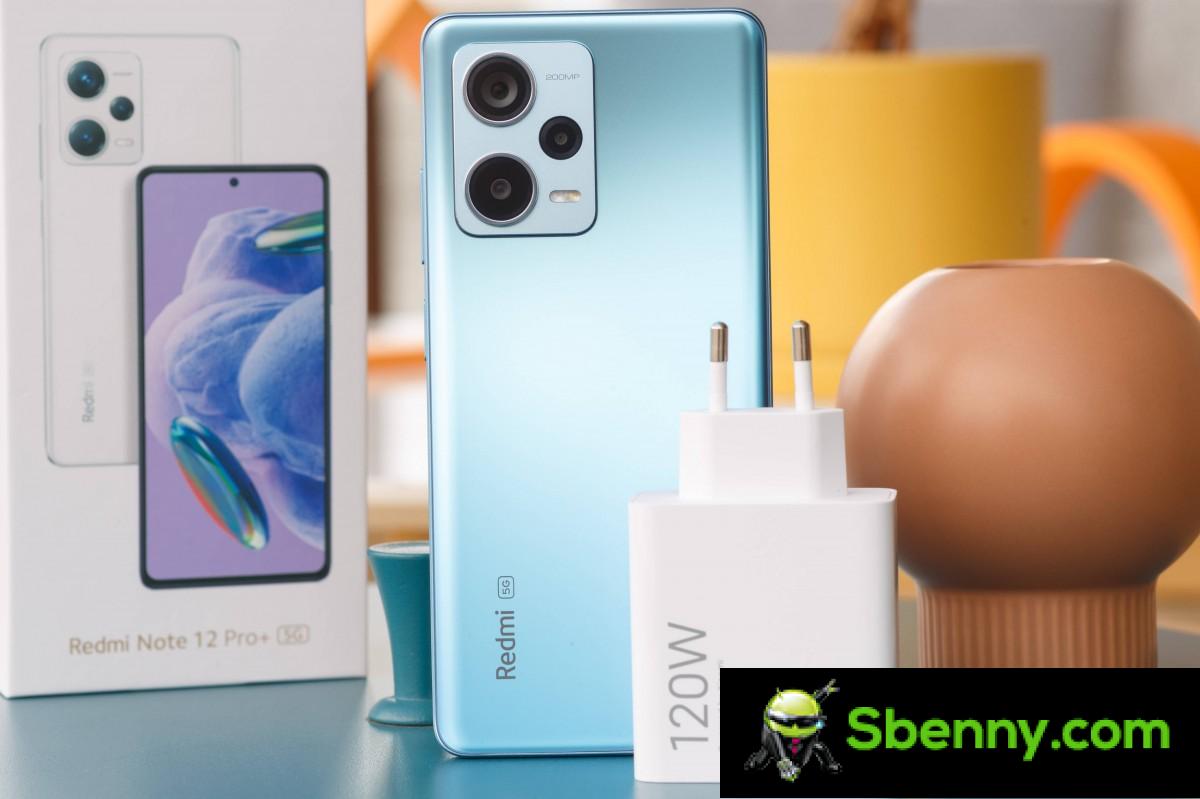
Once the battery is empty, you can use the supplied 120W adapter for recharging, advertised to fill the cell of the Redmi Note 12 Pro+ from 2% to 100% in 19 minutes with fast charging enabled.
In our tests, the Redmi Note 12 Pro+ battery went from 1% to 34% in 5 minutes, 50% in 9 minutes, 55% in 10 minutes, 75% in 15 minutes, 91% in 20 minutes and 100% in 24 minutes. minutes.
With fast charging disabled, it went from 1% to 32% in 5 minutes, 50% in 10 minutes, 66% in 15 minutes, 87% in 20 minutes and 100% in 29 minutes.
We ran these charging tests in India with 5G mobile data turned on and the screen off, and needless to say, your mileage will likely vary depending on usage and ambient temperature. In our headquarters in Europe, the Redmi 12 Pro+ should charge faster. How fast? You will find out in our in-depth review.
Conclusion
Xiaomi continues to raise the price of the Redmi Note range with the Redmi Note 12 Pro+, and the company told us it’s because it doesn’t want to compromise on anything just to keep the range as affordable as it was before. In Europe, the base model of Redmi Note 12 Pro+ with 8GB RAM and 256GB storage is priced at €500 ($540/INR 44,400), while in India it costs INR 29,999 ($365/€ 340).
The Redmi Note 12 Pro+ is named after last year’s Note 11 Pro+. However, in India, it actually comes to replace the Xiaomi 11i HyperCharge as the brand will not be launching any 12i series smartphone in the country to succeed last year’s 11i range. To add to the confusion, the 11i HyperCharge is known as the Note 11 Pro+ in other countries, and there’s also a Note 11 Pro+ in India, which has different specs.
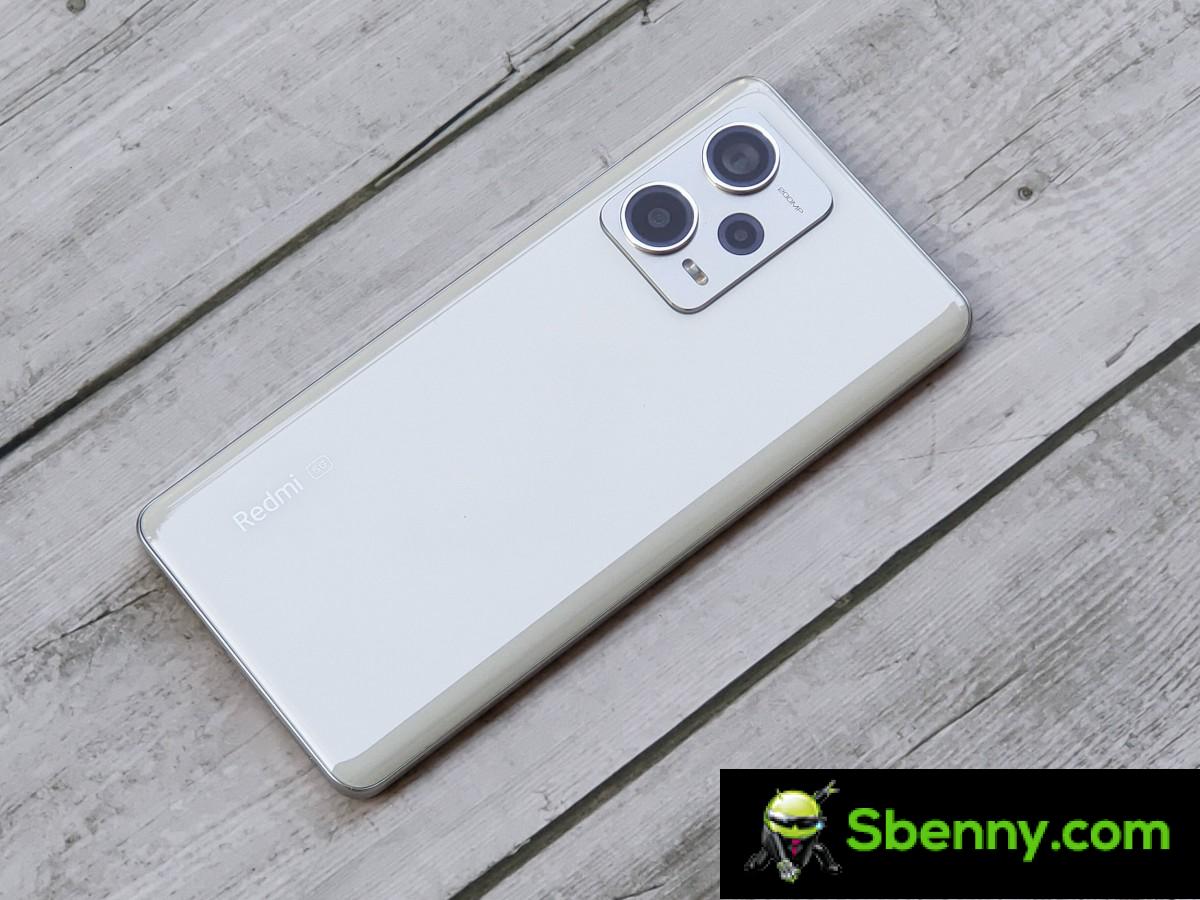
Xiaomi has said that starting with the Redmi Note 12 series, it aims to streamline the lineup, so we hope there aren’t more than a dozen different models in the Note 12 series like we had in the Note 11 lineup.
Coming back to the Redmi Note 12 Pro+, we have to say that overall it is a nice phone with snappy performance, premium design with IP53 rating, good battery life and super fast charging. The smartphone still runs Android 12 and launched with a few bugs, although some of them have been fixed with software updates.
But we’ll have to run the rest of the tests before deciding whether the Redmi Note 12 Pro+ is worth the premium over its predecessor. Stay tuned for our in-depth review to find out!


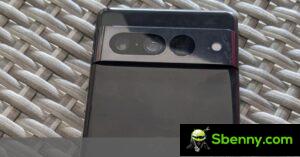

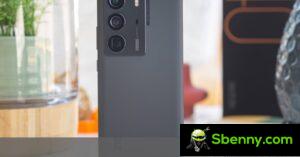


Start a new Thread